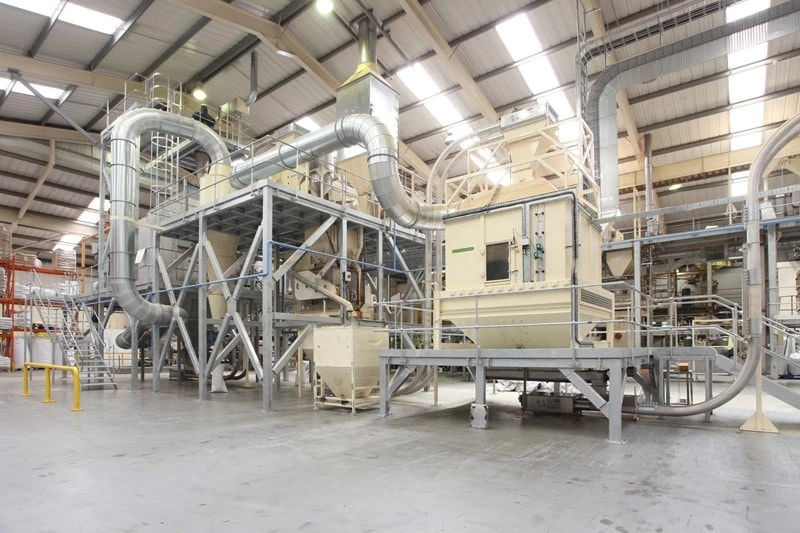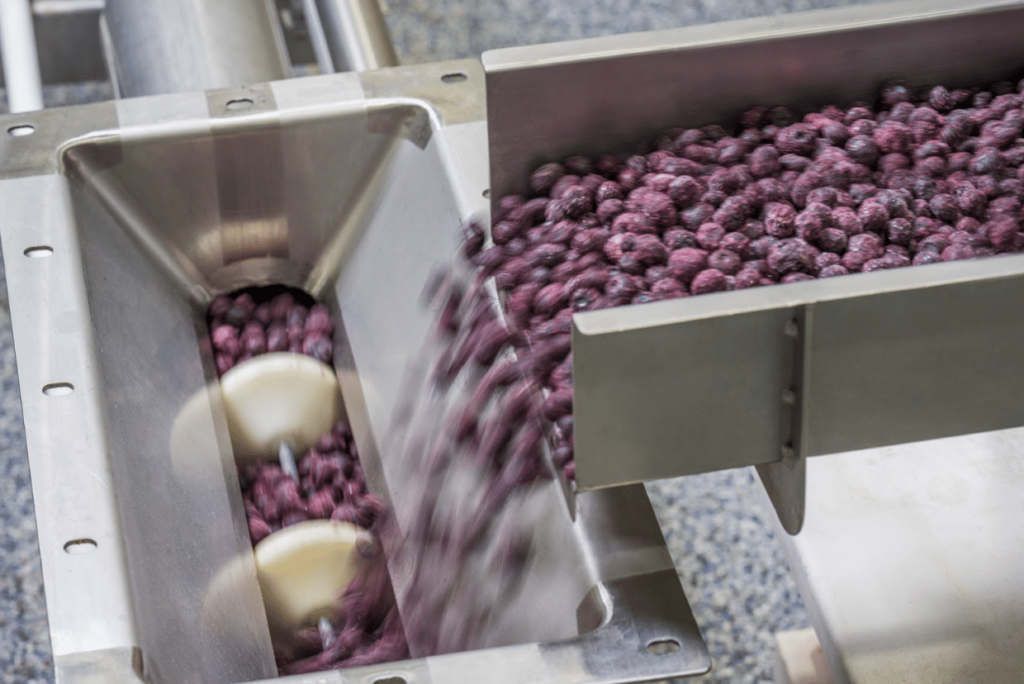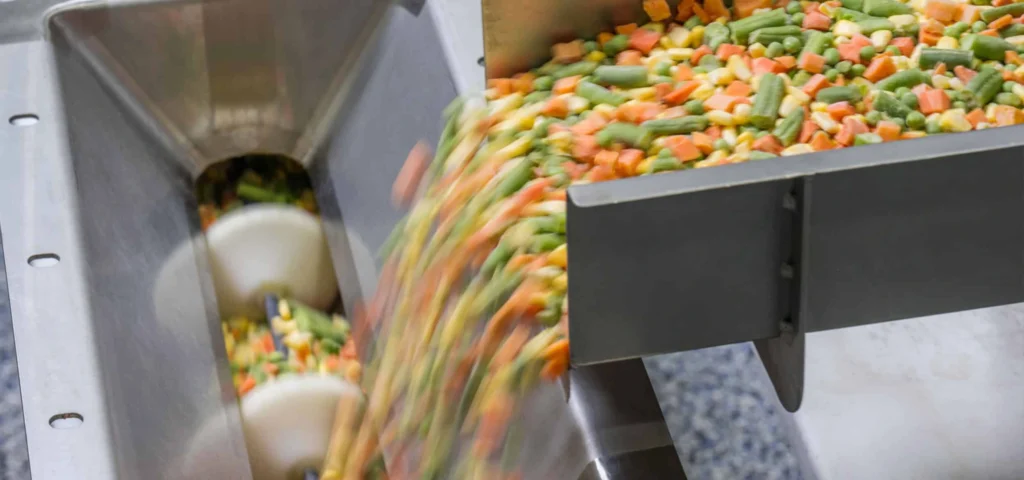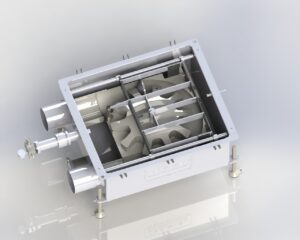Guidelines for producing and packaging frozen food in a sanitary way are paramount to ensure the safety and quality of frozen food products. Proper handling, storage, and packaging of frozen goods are critical to preventing contamination and preserving taste. In this article, we will delve into essential guidelines and best practices to maintain the highest sanitary standards throughout the frozen food production and packaging process.
Why Do We Need to Talk About Food Safety?
If not handled properly, food can become a breeding ground for various pathogens – viruses, bacteria, fungi, and mold. It can transmit a range of diseases that can result in the death of humans or animals. CDC estimates that every year, 48 million people contract a foodborne illness in the United States – that is 1 in 6 Americans. Of those, 128,000 individuals are hospitalized, and 3,000 lose their lives due to these diseases.
Food safety is a scientific discipline that aims to prevent foodborne illness through safe handling, preparation, and storage of food. It recommends guidelines and routines that food handlers should follow to avoid health hazards and keep consumers safe.
Who Is in Charge of the Food Safety Laws?
In the United States, three organizations are in charge of controlling food safety conditions and food laws: the Center for Disease Control and Prevention (CDC), the Food Safety and Inspection Service (FSIS), and the Food and Drug Administration (FDA).
These agencies have introduced Good Manufacturing Practices (GMPs) to help the production of safe food in the processed food industry. They apply regardless of what type of food you’re processing – fresh meat, meat products, egg products, fresh fruits, other types of fresh produce, perishable foods, refrigerated foods, or something else entirely.

Importance of Good Manufacturing Practices (GMPs)
Good manufacturing practices are not to be confused with standard operating procedures (SOPs). SOPs represent individual tasks performed in the production process or routine methods for performing specific operations during production.
GMPs, on the other hand, are related to the procedures that have an impact on the safety of the final product. These practices encompass equipment, people, processes, and the processing plant environment during food production. GMPs bring many benefits to food businesses and consumers alike:
- Extended shelf life and storage life of food items,
- Reduced product reprocessing,
- Reduced risk of product suspension,
- Reduced risk of food poisoning,
- Compliance with commercial and federal food safety guidelines,
- Reduced number of returns, rejections, or complaints about finished products.
GMP Requirements Related to Production Buildings and Facilities
Manufacturing facilities must adhere to GMP requirements from floor to ceiling to ensure the production of safe food. Walls, floors, and ceilings must be surfaces that are non-toxic, non-absorbent, smooth, easily cleanable, and resistant to sanitizers and water. They must not have any holes or cracks that could harbor pests or pathogens. All walls must be sealed around openings (such as pipes or equipment parts) and at the juncture with the floor.
Ceiling material in any area must not be secured with staples, nails, or screws. Lines or pipes cannot be supported with wires, tapes, strings, or ropes. There must be no evidence of water leaks or water accumulation. The floor should be properly drained and have no low spots that might lead to standing water.
If they are open to the outside, doors should be self-closing. If they are to remain open, they must be equipped with a strip door or air curtain. All windows, walls, electrical boxes, ceilings, and floors have to be free of contaminants, dust, dirt, webbing, rust, mold, peeling or flaking paint, and food accumulation.
Ventilation in the processing area has to function correctly, be easily cleanable, and prevent product contamination. All filters, screens, fans, fan guards, louvers, ductwork, or other units should be regularly inspected and cleaned. There should be no condensation, foul odors, vapors, or fumes in the facilities. Waste management systems should not be a source of contamination. Cleaning and sanitizing dumpsters and waste receptacles is necessary to reduce the odor and attraction of pests.

Standards Related to Equipment Used in Food Processing
The main purpose of using packaging equipment in frozen food production is to prevent microbial or physical contamination. Materials used in making this equipment have to be non-toxic, non-absorbent, food-grade, corrosion-resistant, impenetrable, and smooth in all the places they come into direct contact with the product. If a piece of equipment is broken, temporary repair materials such as string, wire, wood, tape, or cardboard can’t be used.
There must not be any leaks in fittings, gaskets, or valves in equipment used in various stages of food processing. Equipment design should divert condensation away from the product and food contact surfaces. Pressure gauges, thermometers, and recording charts must be provided where possible. They should be easily accessible and in good working order.
Industrial Conveyor Systems Have to Meet Strict Standards
Conveyor belts, in particular, have to meet strict standards in the frozen food industry. They must be free of metal clips, loose pieces of rubber, or loose strings. One of the best options for conveying frozen foods is an enclosed tubular conveying system such as the Cablevey Conveyors frozen food conveyor.
These conveyor solutions keep the materials safe and clean while in motion and also ensure the cleanliness of plant facilities and low material wastage. Specialized plastic tubing of Clearvey™ Cablevey conveyor technologies also reduces the incidence of black specks on the product, which is quite common in stainless steel equipment.
Cleaning Schedules and Procedures That Are Used Should Be Clearly Outlined
Staff should organize a fixed cleaning and sanitizing schedule for all equipment. This schedule reduces bacterial loads and ensures the wholesomeness of the product. Cleaning procedures should be outlined in cleaning manuals and performed exactly as instructed. No metal sponges or steel wool should be used during cleaning.

Sanitary Protocols and Controls Need to Be in Place
Adequate sanitation protocols should exist for each segment of production – receiving, inspecting, segregating, preparing, manufacturing, packaging, transporting, and storing. Sanitary quality control and sanitary conditions should be under the supervision of one or more highly trained and experienced individuals. These employees are responsible for ensuring that there is no potential for contamination from any source in any production steps.
Where applicable and necessary, testing procedures (such as microbial, chemical, or extraneous-material testing) can be utilized for assessing the effectiveness of sanitation protocols and operations. Physical factors should be carefully monitored to minimize the risk of microbial contamination and growth of microorganisms – here’s what needs to be monitored:
- Temperature,
- Pressure,
- Flow rate,
- pH values,
- Humidity.
Manufacturing operations should also be monitored to prevent temperature fluctuations (temperature abuse), time delays, or mechanical breakdowns that could contribute to the decomposition or cross-contamination of food. These operations include freezing, acidification, heat processing, dehydration, and refrigeration.

Packaging Requirements That Production Facilities Have to Keep in Mind
Frozen food packaging has to be flexible and robust enough to accommodate this type of product. We have listed all the essential requirements regarding frozen food packaging materials in the list below:
- Materials should be able to withstand temperatures as low as -40 degrees F.
- The materials must not allow the migration of hazardous substances into the food. They should be safe and suitable for the purpose.
- The packaging should be impervious to sealing, freezing, storage, transportation, and sometimes even cooking pressure.
- Packaging material shouldn’t be stored close to odorous materials, pesticides, cleaning compounds, or other chemical substances.
- If the product cannot be used all in one go, it should be packaged in resalable food containers to prevent deterioration and contamination.
Regular Inspections and Audits Are Vital
Because frozen food production requires the highest level of sanitation, regular inspections and audits are imperative. The results of an inspection are typically compared to established standards or specifications to determine whether the procedure or piece of equipment is in line with them. Audits are systematic examinations of records, operations, statements, data, and the performance of an organization, and they can be:
- First-party – Performed by the company upon itself.
- Second-party – Performed by a customer upon potential suppliers. The customer seeks to determine whether the supplier meets the requirements outlined in their proposed contract.
- Third-party – Performed by an independent team of auditors (or a single auditor) to assess the safety and quality of the food production system. If the assessment is successful, the auditors might issue a certificate of conformance.
Contact Cablevey Conveyors for the Top-Rated Conveyor Solutions in the Food Processing Industry
When it comes to top-rated conveyor solutions in the food processing industry, Cablevey Conveyors stands as a renowned leader. With a commitment to excellence and innovation, we provide conveyor technologies that set industry standards. Our industrial conveyor systems are meticulously designed for maximum efficiency, cleanliness, and reliability, catering to the specific needs of the food processing sector.
We understand the critical role conveyor systems play in maintaining product quality and safety. Whether you require a tubular conveying system or a custom solution, we offer cutting-edge options that elevate productivity while prioritizing cleanliness and hygiene. Contact us at Cablevey Conveyors today to explore our comprehensive range of conveyor engineering and experience the difference that top-rated conveyor technology can make in your operations!
FAQ
What Makes Cablevey Conveyors a Trusted Choice in the Food Processing Industry?
Cablevey Conveyors has earned its reputation as a trusted choice in the food processing industry through a combination of innovative technology, dedication to excellence, and a commitment to hygiene and reliability. Our conveyor solutions are designed with precision, ensuring they meet the highest industry standards and deliver exceptional performance. We understand the unique demands of food processing, and our systems are tailored to address these specific needs.
Why Is Cleanliness Crucial in Conveyor Systems for Food Processing?
Cleanliness is paramount for maintaining product quality and safety. Contaminants or debris on conveyors can lead to foodborne illnesses and compliance issues. Our solutions prioritize cleanliness, making them easy to clean and maintain, helping food processors adhere to stringent hygiene regulations, and ensuring consumer safety.
How Do Cablevey Conveyors’ Solutions Minimize Downtime?
Our conveyor technologies are designed to minimize downtime by incorporating features that prevent breakdowns due to debris or dirt buildup. By keeping the systems clean and efficient, we reduce the need for maintenance and repairs, allowing production operations to continue uninterrupted, thus saving valuable time and money.
Can Cablevey Conveyors Provide Custom Conveyor Solutions?
Yes, Cablevey Conveyors offers custom conveyor solutions to meet the specific requirements of different industries and applications. Our team works closely with clients to understand their unique needs and tailor conveyor systems accordingly, ensuring optimal performance and efficiency.
How Can I Get Started With Cablevey Conveyors for My Conveyor System Needs?
Getting started with Cablevey Conveyors is easy. Simply contact our team to discuss your conveyor system requirements and receive a personalized quote. We’re here to assist you in choosing the right conveyor engineering to enhance your operations, whether you’re in the food processing industry or any other sector that demands efficient and sanitary conveyors.






